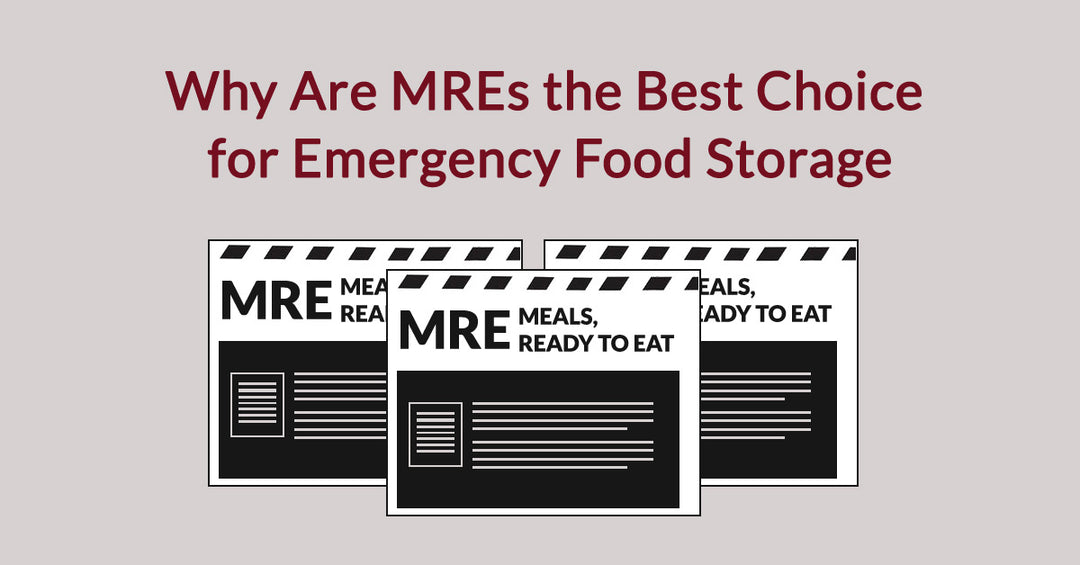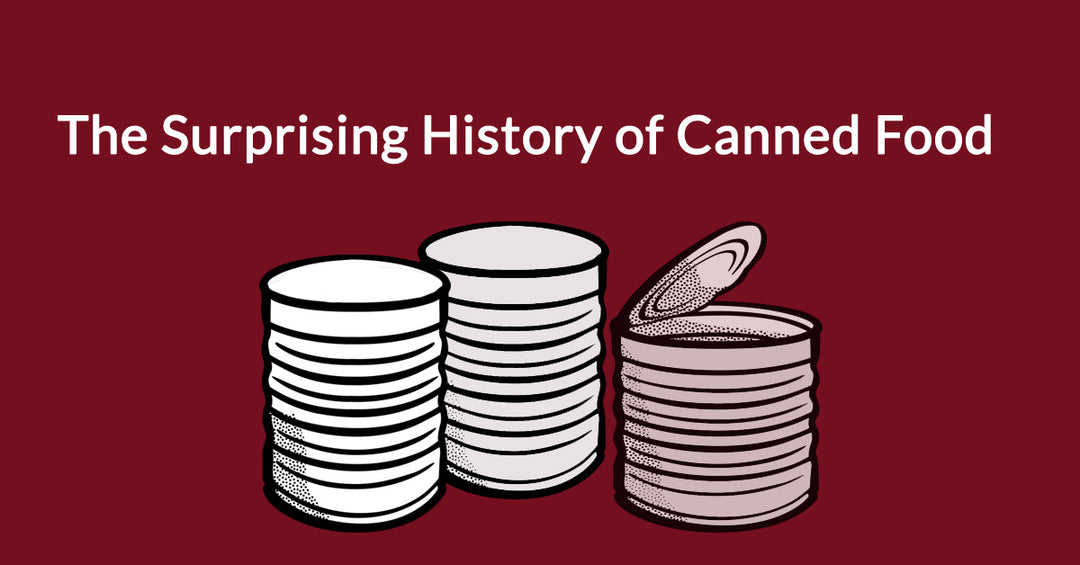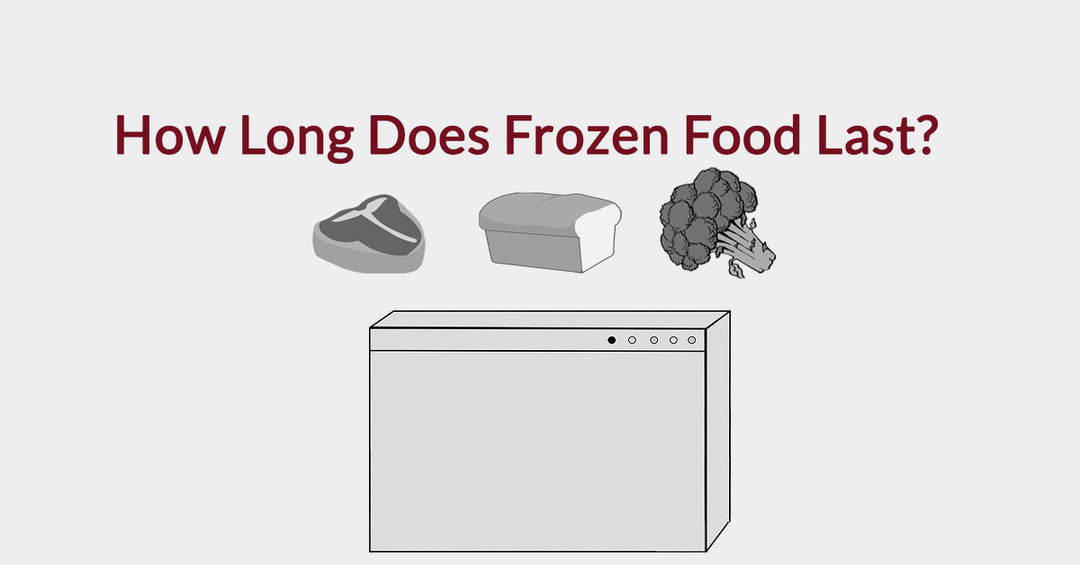Why Are MREs the Best Choice for Emergency Food Storage

Nobody wants to experience an emergency situation. These events come in a wide variety of different forms. Emergencies can range from earthquakes to floods and even fires. One of the more difficult aspects of emergencies stems from just how much any given emergency can differ from another. For example, the damage created by an earthquake is dramatically different than what's found with a flood. However, there are some similarities between all of these events.
One of the biggest common elements shared by all emergencies is the simple fact that people can prepare for them with a little planning. Survival food, and more specifically the MRE, is the foundation of a solid emergency plan. But understanding why that's the case and how to best leverage it takes a little more explanation.
What Goes Wrong During an Emergency
It's important to consider why various conditions cause an emergency in the first place. In doing so we can often discover that various effects associated with emergencies can be mitigated with the proper planning. Basically, we can take steps to deescalate an emergency situation into something more manageable.
With that in mind, what makes something an emergency? The answer typically comes down to danger. Maslow's hierarchy of needs provides a fairly simple way to understand what people need in order to feel safe and secure. The two foundational elements of that hierarchy are physiological needs and safety needs. When we classify something as an emergency it's typically because these foundational elements of our well-being have been disrupted.
One of the largest common issues linking all emergency situations is a disruption in our access to food and water. For example, blizzards, hurricanes, and even tornadoes make it difficult to acquire more food. Even water can become an issue in situations where we'd have thought we were properly covered. People often assume that floods won't interfere with access to drinking water. But floodwater is almost never safe to drink. And we find similar problems with most other disasters. Food and water is cut off and our ability to restock any of it is cut off.

Step 1: Find Your Space
Thankfully, it's easier to prepare for this aspect of emergencies than most people assume. One of the key elements simply comes down to knowing what to stock up on and how to store it. This process begins by creating a good location to store food and water.
It's generally a good idea to consider which kinds of emergencies are the biggest risk factor. For example, if we live in an area with tornado activity it's a good idea to plan around that as the most probable threat. Though it's always best to err on the side of caution and plan around as many potential emergencies as possible.
With that in mind, it's generally best to find an area in our home that doesn't have any windows. It's also good if the area is slightly chilled, but not outright cold. Basements tend to be an ideal fit for those criteria. But even closets can be a good fit. Windows are usually the most important consideration since they can shatter. This lets dangerous properties into the home, creates potential sources of injury and risks ruining a stock of food and water. An ideal area will have enough space for someone, preferably the entire household, to take shelter. This again makes a larger closet a good fit. Again, a basement is a perfect solution if available.
When we've found a good place we can generally improve it by adding stable shelving. It makes it easier to store emergency supplies. This, of course, leads to one of the most important parts of emergency prepping - the food and drink.

Step 2: The Right Food for an Emergency
Once an emergency area has been selected and prepared it's time to stock it. Water is usually a fairly easy solution. A combination of bottled water and a good water filter should be enough to get people through almost any emergency. It's generally best to plan for any emergency situation to last at least three days. This then becomes a question of how much water any given person will need. Men are usually advised to drink about fifteen cups of water per day and women eleven.
Bottled water typically has about two cups of water per bottle. When scaled up to every person in a household it should become clear that water is a more significant concern than most people realize. This is part of why planning in advance is so important. The water filter will ensure that even if the bottled water runs out that there's still a viable, if not ideal, plan B.
Bottled water can last an extremely long time. It should ideally be cycled out every two years or so. But in practice, there's really no set time limit on how long bottled water can last. But food isn't nearly that simple. Or at least that's true for most foods.
Some dry food like rice can last a surprisingly long time - up to two years. But there's a big issue there. Cooking rice uses up valuable water and isn't always possible during emergency situations. And it's fairly low on a lot of nutrients, isn't filling, etc. The same goes for most dry foods with a long storage life.
However, the MRE (Meals Ready to Eat) is generally considered the optimal solution to the problem of long-term food storage. MREs are a perfect emergency food since they can be stored for up to five years. What's more, they serve as a great survival food due to the high nutritional value of each of the MREs. Emergency food needs to pack as much nutritional content and raw calories as possible into a single meal. And MREs are able to do exactly that. What's more, MREs are designed for portability. They pack all of that nutritional power into a fairly compact package.
There's also the fact that MREs are generally enjoyable to eat. A lot of work has gone into designing MREs that are more than just nutrient packages. MREs actually provide tasty meals that can help enliven difficult survival situations. A good meal is one of the best ways to calm people down during otherwise difficult events.
MREs will even help make meals pleasant by providing everything needed to enjoy them. This even includes eating utensils and flameless ration heaters. Desserts are even a part of the best MREs. It's quite literally everything that people could want from a standard meal, but in a portable form that's easy to store long-term.
Step 3: Additional Items for Survival Situations
It's also a good idea to stock some additional items along with the food. Crank-powered radios with USB chargers are fairly inexpensive these days and make a great survival item. This isn't just about getting news about the emergency situation either. It also helps to keep people calm and collected by supplying both news and entertainment.
On top of this it's usually a good idea to have a basic first aid kit stored along with the food. It doesn't have to be elaborate. But some basic supplies to tend to minor wounds can quite literally be a lifesaver.

Final Thoughts for Emergency Preparation
We also need to remember to cycle through supplies on a regular basis. MREs are good for an extremely long time. But that doesn't mean they can sit around forever. MREs can last for up to five years in storage. However, it's generally a good idea to cycle through them on a regular basis. The same goes for bottled water. It's theoretically stable for as long as we need it. But it's generally best to drink bottled water within two years of purchase.
We can generally just grab some MREs and bottled water from emergency supplies and then restock as needed. Or at least that's a viable strategy as long as there's a margin of error factored in when creating those emergency supply stores. We all have those days when we can't put together a proper meal. And that can almost be considered an emergency of sorts as well. It's just important to replace MREs in our emergency stock after eating them.




